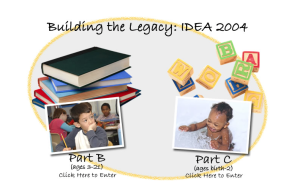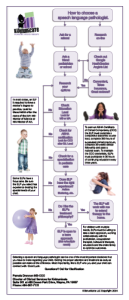My 20 month old daughter seems to be behind in speaking compared to her 18 month old cousin. What should I do and if needed where should I look to for speech therapy options free and paid? (Megan P of three girls)
First of all, language and speech development varies from child to child, so it’s never a good idea to compare your child with another to base concerns. Secondly, there is no age too young to start evaluating speech and language issues if the signs are there. Always remember, early intervention leads to the best long-term results. Finally, speech and language is not just about speaking it is also about listening and communicating in non-verbal ways too.
OK now ask yourself these questions:
- Is she using a few words and phrases (Where’s dada, all gone, bye-bye)?
- Is she clearly using consonant sounds at the beginning of words?
- Does she know a few body parts (Where’s your nose)?
- Can she follow simple commands or questions (come here, get up)?
- Does she enjoy hearing simple songs, stories or rhymes.
- Can she point to pictures in a book when asked (Where’s the teddy bear)?
- Does she add new words constantly?
If you answered yes to most of these, then your daughter is communicating in an age appropriate manner even if she is behind her younger cousin. You can monitor her progress by looking at the Development Milestones on this website.
If you did not answer yes to most of these questions, then your child may need an evaluation.
Speech therapy options free and paid
 First of all, ask your pediatrician for his or her analysis. A good pediatrician can refer you to appropriate services.
First of all, ask your pediatrician for his or her analysis. A good pediatrician can refer you to appropriate services.
Next explore all of the potential free services available. The Individuals with Disabilities Education Act (IDEA) has made free programs and services available for all children in the United States, birth to 2 and ages 3 to 21 (if eligible). You can get information about IDEA here.
Infants and toddlers, birth to 2 years old, with disabilities and their families can receive early intervention services under IDEA Part C. After an evaluation, services needed are outlined in an Individualized Family Service Plan (IFSP). The IFSP provides an analysis of the current level of development, highlights goals and milestones and provides a recommendation of services needed. This is your contract with the state and the team of therapists helping your kid.
The programs are administered at a state level, so I recommend that you google State Name and IDEA to get a link to your state’s program. In Pennsylvania, Early Intervention help can be found at this Pennsylvania Department of Education website page.
After age three, your child moves to IDEA Part B. Usually the services associated with IDEA part B are administered by the school district in which your child resides. This typically applies to preschool too. Similar to the IFSP, plan B individuals also get a contract with assessments, goals, milestones and service recommendations, but it is called an IEP (Individual Education Plan). Contact your state or school district to learn more about the specifics.
You might find that your child does not qualify for assistance under the Individuals with Disabilities Education Act. Or like many parents, you want to supplement the free services that your child is going to receive. If so, you need to find a private practice speech language therapist or a therapy clinic.
How to find an speech language pathologist for supplemental therapy or if your child does not qualify for IDEA.
 Selecting a speech and language pathologist can be one of the most important decisions that you have to make regarding your child. Getting the proper attention and treatment as early as possible can make all the difference. I put together this guide to help you think through the process of finding and selecting a credentialed and licensed speech language pathologist in your area and for your situation. Click on the link or the image to get the PDF.
Selecting a speech and language pathologist can be one of the most important decisions that you have to make regarding your child. Getting the proper attention and treatment as early as possible can make all the difference. I put together this guide to help you think through the process of finding and selecting a credentialed and licensed speech language pathologist in your area and for your situation. Click on the link or the image to get the PDF.
GET LARGE CHART HERE How_To_Select_A_Pediatric_SLP_Chart
Like us on Facebook

